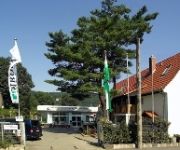Facts and Data
Webpages:
Official Unesco Page
Basis Data:
Unesco World heritage since: 2004
Size of heritage: 1,930 ha
- Buffer zone: 1,240 ha
Coordinates:
Longitude: 13,821°
Latitude: 51,040°
Summary
The 18th- and 19th-century cultural landscape of Dresden Elbe Valley extends some 18 km along the river from Übigau Palace and Ostragehege fields in the north-west to the Pillnitz Palace and the Elbe River Island in the south-east. It features low meadows, and is crowned by the Pillnitz Palace and the centre of Dresden with its numerous monuments and parks from the 16th to 20th centuries. The landscape also features 19th- and 20th-century suburban villas and gardens and valuable natural features. Some terraced slopes along the river are still used for viticulture and some old villages have retained their historic structure and elements from the industrial revolution, notably the 147-m Blue Wonder steel bridge (1891–93), the single-rail suspension cable railway (1898–1901), and the funicular (1894–95). The passenger steamships (the oldest from 1879) and shipyard (c. 1900) are still in use.
Location on Map
Show bigger map on Openstreetmap
Introduction
The Dresden Elbe Valley is a UNESCO World Heritage site located in the state of Saxony, Germany. This picturesque valley stretches along the Elbe River and encompasses the city of Dresden and its surrounding landscape. The site is renowned for its exceptional cultural and natural significance, attracting visitors from around the world.
History
The history of the Dresden Elbe Valley dates back centuries. The area has been inhabited since the Stone Age, and Dresden itself was founded in the 12th century. Over the years, the city flourished as a center of art, culture, and trade, becoming one of Europe's most important cultural hubs.
However, the valley also witnessed significant destruction during World War II. The bombing raids in 1945 resulted in the devastation of Dresden's historic center and the loss of countless cultural treasures. The city was subsequently rebuilt, but the scars of war remained.
UNESCO World Heritage Status
In 2004, the Dresden Elbe Valley was inscribed as a UNESCO World Heritage site. It was recognized for its outstanding universal value, representing a harmonious blend of cultural and natural landscapes. The site showcases the unique architectural heritage of Dresden, as well as the picturesque beauty of the Elbe River and its surrounding hills.
The UNESCO designation aimed to protect and preserve the valley's exceptional cultural and natural assets. However, in 2009, the Dresden Elbe Valley was controversially delisted from the World Heritage list due to the construction of a four-lane bridge that impacted the visual integrity of the landscape.
Current State
Despite losing its World Heritage status, the Dresden Elbe Valley remains a captivating destination for tourists and locals alike. The city of Dresden has successfully restored many of its historic landmarks, including the Frauenkirche, Zwinger Palace, and Semper Opera House. These architectural gems stand as a testament to the city's resilience and commitment to preserving its cultural heritage.
The Elbe River, with its meandering course through the valley, continues to enchant visitors with its scenic beauty. The riverbanks are adorned with lush greenery, charming villages, and vineyards, creating a tranquil and idyllic atmosphere.
The Dresden Elbe Valley also offers numerous recreational opportunities. Visitors can explore the valley on foot or by bike, following the Elbe Cycle Path that winds through the region. The surrounding hills provide excellent hiking trails, offering breathtaking views of the valley and the city of Dresden.
Furthermore, the valley hosts various cultural events and festivals throughout the year, attracting art enthusiasts, music lovers, and history buffs. The Dresden Music Festival, held annually, showcases world-class performances in stunning venues, while the Dresden Film Festival celebrates the art of cinema.
Conclusion
The Dresden Elbe Valley in Saxony, Germany, is a captivating UNESCO World Heritage site that combines rich cultural heritage with stunning natural landscapes. Despite losing its World Heritage status, the valley continues to attract visitors with its restored architectural treasures, picturesque riverbanks, and recreational opportunities. The Dresden Elbe Valley stands as a testament to the resilience of its people and the enduring beauty of this historic region.
Hotels and places to stay
ACHAT Premium Dresden
Schöne Aussicht
Am Blauen Wunder
Gutshof Hauber
Hotel Alttolkewitzer Hof
Alttolkewitzer Ferien-& Privatzimmer Mrosk
Appartement-Villa Ulenburg
Gästehaus Matthias
Loschwitz Gästehaus
Pension Garni No. 11
Videos from the area
Videos provided by Youtube are under the copyright of their owners.

















